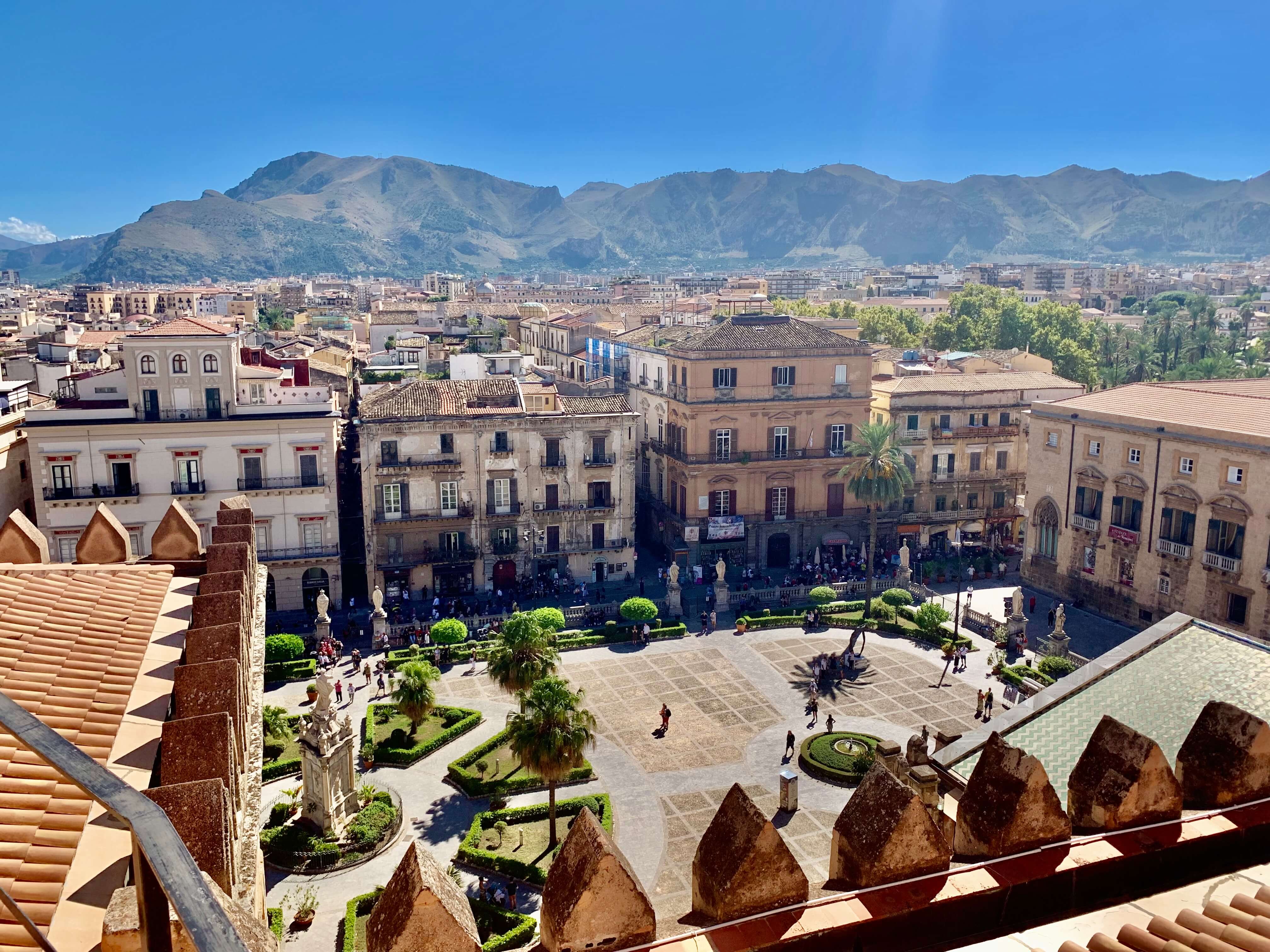- Home
- History of Sicily
The History of Sicily: From Ancient Times to Modern Day
Sicily is the largest island in the Mediterranean. Its history is long and complex, shaped by many cultures and civilizations.
Ancient Greeks, Romans, Normans, and Arabs... All have left their mark on the island's architecture, art, and traditions.
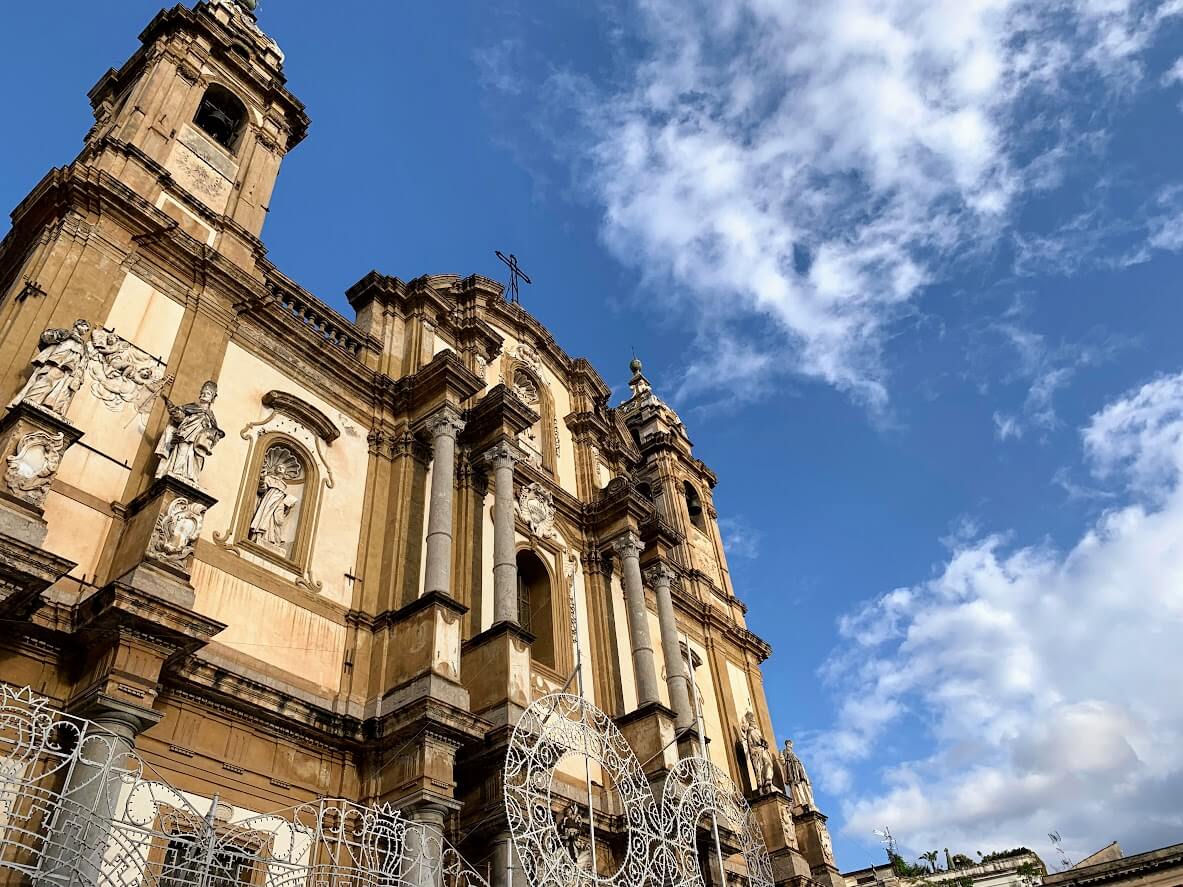
As fascinating as Sicily's history is, it is also a history of oppression. The beauty of the landscape is matched only by the suffering of its people.
Although things look brighter now, the lessons of history can still be felt. It includes a few times of grander and lots of oppression.
Ancient Greeks Settle in Sicily
The ancient Greeks played a significant role in shaping the history of Sicily. First Greek colonists arrived in the 8th century BC and established settlements on the island.
One of them was in Syracuse, which was one of the Mediterranean's most important cities in its time.
The Greeks brought with them their language, religion, and culture. With them, Sicily became a center of art and philosophy.
The Greek influence can still be seen on the island, in its language, architecture, and cuisine.
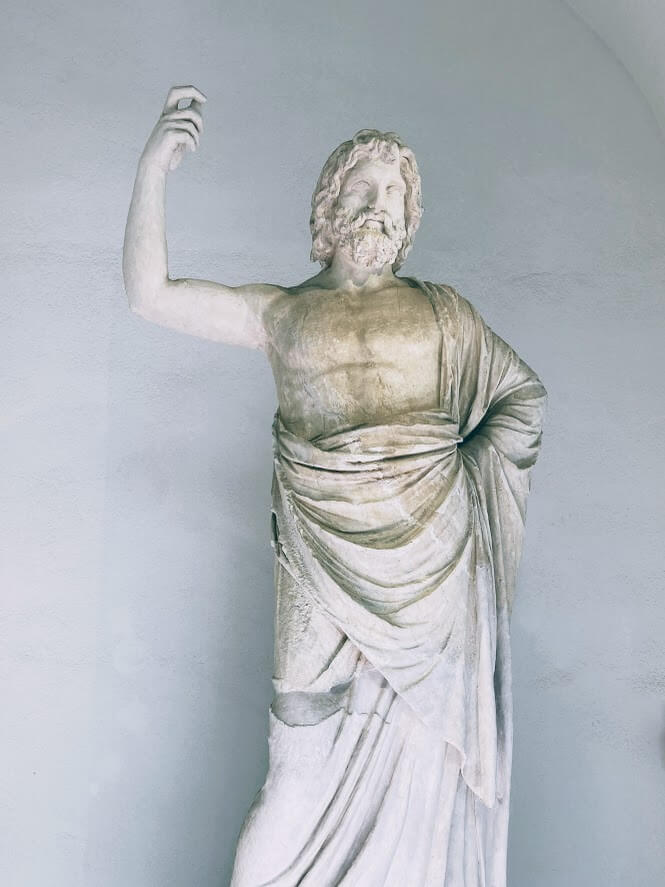 The Greek god Zeus seems like quite a groovy guy. The statue stands in the Archeological Museum of Palermo.
The Greek god Zeus seems like quite a groovy guy. The statue stands in the Archeological Museum of Palermo.The Roman Empire Arrive on the Shores of Sicily
After the fall of the Greek colonies, Sicily came under the control of the Roman Empire.
The Roman time was pretty uneventful in terms of culture. The Romans treated Sicily with little respect. They were mostly interested in the island's fertile soil and strategic location. In those times, much of the island was taken over by vast landed estates.
This set a pattern of land tenure that ruined Sicilian agriculture for hundreds of years.
Liberty was almost extinguished. The slave gangs toiled naked in the fields. The harvest was sent to Rome.
The island remained under Roman control for several centuries. In practice, it ended after the collapse of the Western Roman Empire in the 5th century AD.
The Arab Conquest Revitalizes Sicilian Culture
After Roman rule, Sicily became a province of the Byzantine Empire. At one point, Syracuse almost became the Empire's capital.
The project fell when its architecture, Emperor Constans II's, servant killed him in his bath.
Then, in the 9th century AD, it was Northern Africa's Arabs turn to conquer the island.
Compared to the Roman rule, the time was easy enough for the Sicilians. Greek Christian and Jewish communities were allowed to keep their freedom.
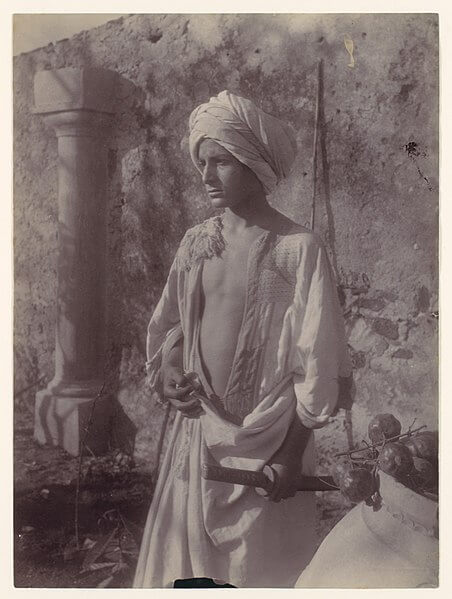 Sicilian boy in Moorish dress circa 1895. (Photo by Wilhelm von Gloeden)
Sicilian boy in Moorish dress circa 1895. (Photo by Wilhelm von Gloeden)The Muslims displayed a degree of religious toleration. The churches and monasteries were able to operate as before. Hellenistic scholarship flourished as it had done in Greek times.
The Arabs introduced new crops, such as citrus fruits, cotton, melon, pistachio, and date palms. They also planted enough sugarcane to build a substantial export trade.
The Arabs brought with them a new system of agriculture. It was based on innovations such as terracing and siphon aqueducts for irrigation.
All this led to greater agricultural productivity. The damage to agriculture caused by the Romans was finally remedied.
Other Arab influences include a love of poetry, music, and art. These helped to shape the island's cultural identity.
With the Arabs came a rich cultural heritage that would leave a lasting impact on the island.
One thing Arabs didn't bring was political stability. Soon different Emirs started to quarrel with each other, which gave way to new conquerors.
The Norman Kingdom of Sicily
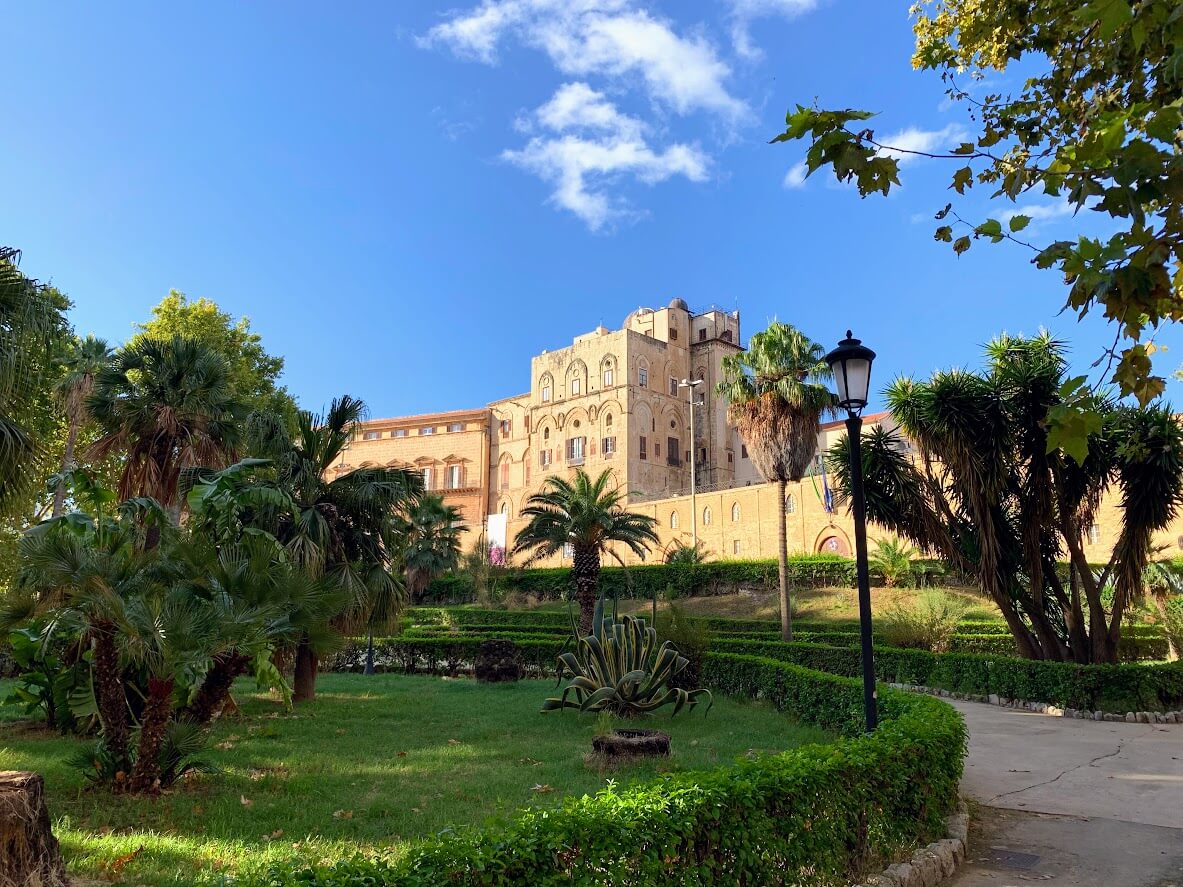 The Norman Castle in Palermo. The Arabs had made Palermo the capital of Sicily. It remained so under Norman rule, just as Arabic remained the language of administration.
The Norman Castle in Palermo. The Arabs had made Palermo the capital of Sicily. It remained so under Norman rule, just as Arabic remained the language of administration.In 1060, a group of Norman soldiers led by Robert Guiscard arrived in Sicily and began to conquer the island. It took them more than thirty years to conquer the whole of Sicily.
The Norman Kingdom lasted about 200 years. Under Norman rule, Sicily experienced a period of great prosperity and cultural flourishing.
The Normans brought with them new innovations in architecture and art. They also introduced a new legal system in Sicily.
In agriculture, they introduced new techniques, such as crop rotation.
In governance, a feudal system helped consolidate Norman rule over the island and provided the basis for the development of a powerful aristocracy.
The Normans constructed magnificent churches, palaces, and other architectural wonders. These can be seen all over the island, but the mostly in the Palermo area.
The Norman conquest of Sicily brought a range of cultural, economic, and social developments. They helped shape the island's history and identity for centuries to come.
The History of Sicily After the Normans
Sicily was flourishing under Norman rule at a time when the rest of Europe was in the throes of the darkest Middle Ages. But as the Renaissance began to illuminate the rest of Europe, it was Sicily's turn to sink into darkness.
After the Norman Kingdom, Sicily passed through the hands of various rulers. It experienced a tumultuous period of political instability and social upheaval.
The rulers changed, but Sicily remained a periphery. Power had fled elsewhere, and the rulers had no interest in the island.
While the Renaissance offered hope for a better future in Europe, Sicily was under the Spanish Inquisition.
To make matters worse, the discovery of new sea routes to the Americas made a once thriving Mediterranean Sea more like a meaningless backwater.
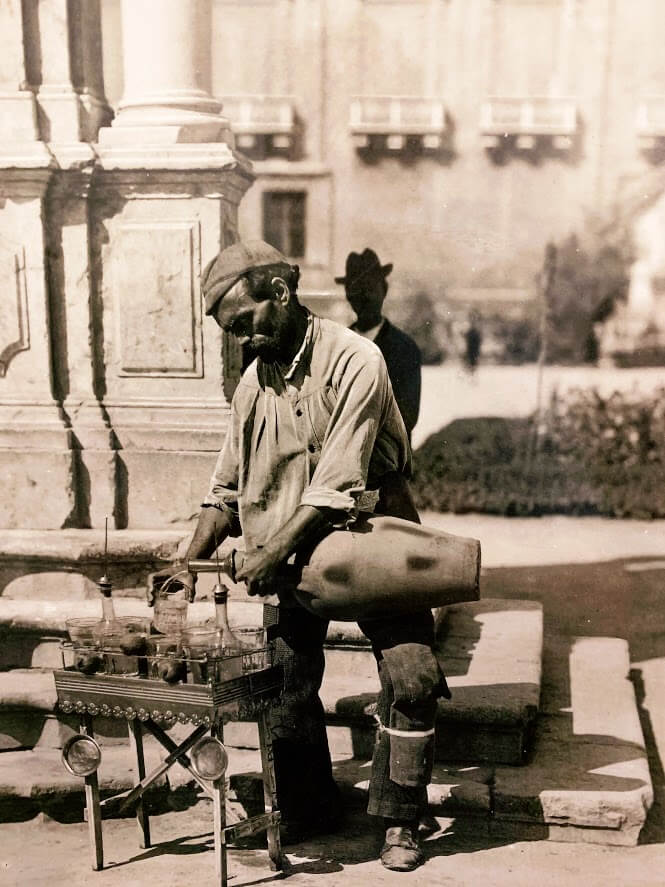
Modern-Day Sicily and its Cultural Heritage
In 1861, Sicily became part of the newly created Italian state. The event was soon deemed as not worth celebrating.
Centuries had taught Sicilians that rulers were not to be trusted. It was better to mind your own business. The new taxes that hit the southern parts of Italy worst did not help the situation.
This created a breeding ground for the Mafia. At first, in the 19th century, the organization resembled the local security forces. Its rules were firmly rooted in Sicilian character.
Soon the Mafia's power began to grow and its activities became more crime-oriented.
Mussolini made a first serious attempt to destroy it. That ended when the Allied forces landed on the island and started their way up North.
After the Second World War, the Mafia gained strength. It soon became an international criminal organization. A culture of silence enabled it to take a century and a half for its existence to be publicly acknowledged.
Things began to change only in the 1980s, thanks to men like Giovanni Falcone and Paolo Borselino.
Conclusion
Sicily has a long, fascinating, and painful history. Through two and a half thousand years of Greek, Roman, Arab, Norman, and Spanish rule, the island eventually became part of unified Italian state in 1861.
Since 1946, Sicily has been an autonomous administrative division of Italy. From its troubled past, a thriving culture has grown. History lives side by side with modern-age wonders.
Sicily offers visitors a wealth of experiences and attractions, so it's no wonder millions of people from all over the world visit it every year.
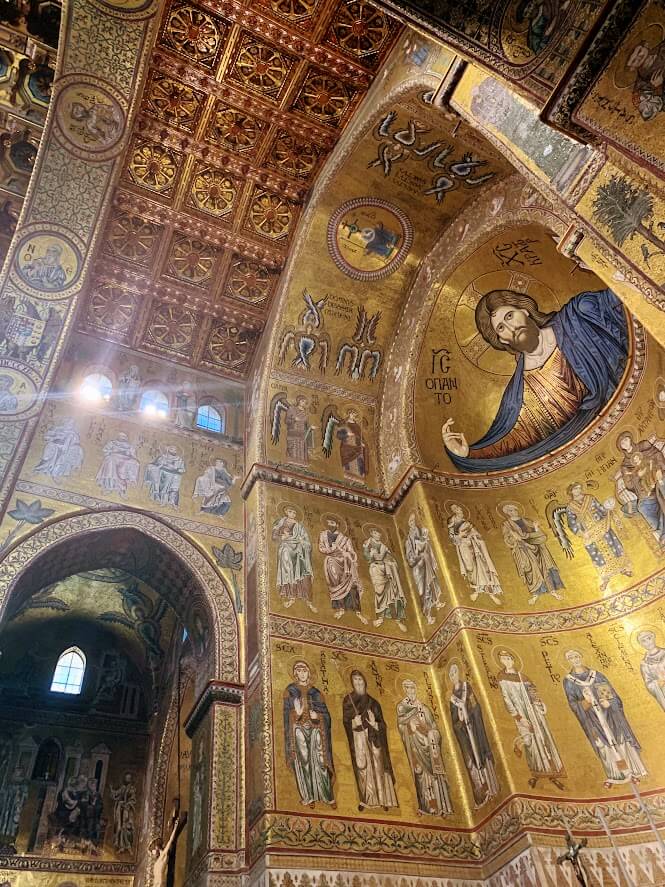 Different cultures - Norman, Arab, and Byzantine - blend effortlessly in places like Monreale Cathedral. It was built in 1172-1174 under Norman rule.
Different cultures - Norman, Arab, and Byzantine - blend effortlessly in places like Monreale Cathedral. It was built in 1172-1174 under Norman rule.Related:
(This page last edited: March 19, 2025)
Recent Articles
-
Sicilian Food - Rich Flavors, Endless Passion
Apr 09, 25 09:54 AM
All you need to know about Sicilian food, its ingredients and history. -
Things to Do in Palermo - Tips for a Perfect Holiday
Apr 05, 25 04:27 AM
Things to Do in Palermo - From historic landmarks to delicious food, this guide has it all. -
The Story of Tommaso Buscetta: From Mafia Boss to Key Witness
Mar 30, 25 05:12 AM
Tommaso Buscetta built Sicilian Mafia into a global empire - which he then destroyed.
Follow MANY FACES OF SICILY on Facebook, Instagram, Bluesky & Pinterest
Contact: vesa@manyfacesofsicily.com

